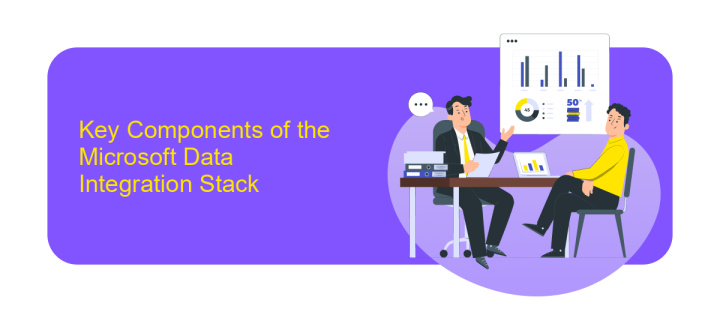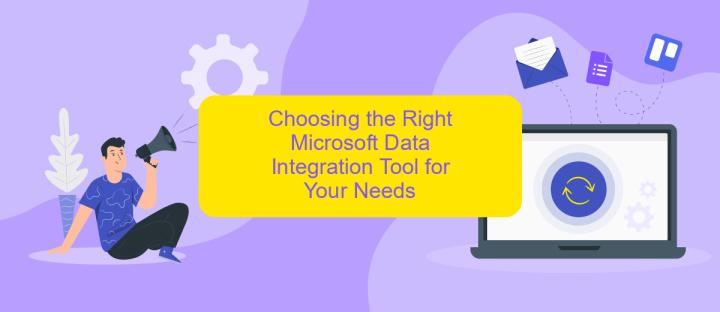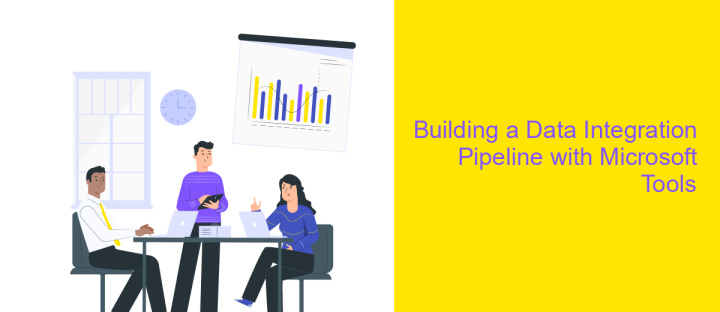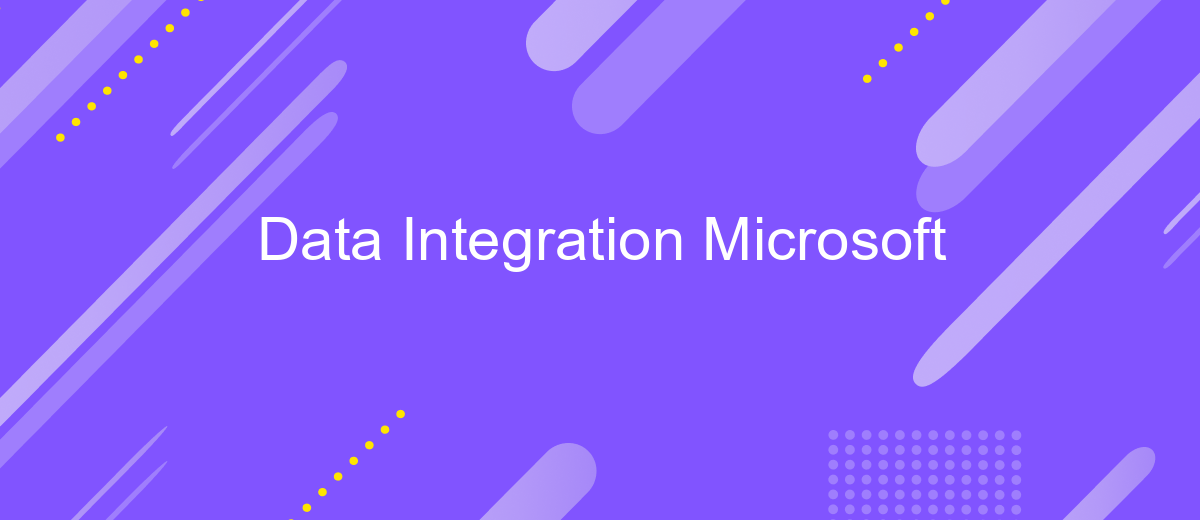Data Integration Microsoft
Data integration is a critical component for businesses aiming to leverage their data effectively. Microsoft's suite of tools offers robust solutions for seamless data integration, enabling organizations to connect, manage, and analyze data from diverse sources. This article explores the capabilities and advantages of Microsoft’s data integration technologies, highlighting how they empower businesses to make informed decisions and drive innovation in an increasingly data-driven world.
Introduction to Microsoft Data Integration Solutions
In today's data-driven world, integrating diverse data sources is crucial for organizations aiming to harness the full potential of their information. Microsoft offers a comprehensive suite of data integration solutions designed to streamline this process, enabling businesses to efficiently manage, transform, and analyze their data. These tools are built to handle data from various sources, ensuring seamless integration and driving informed decision-making.
- Azure Data Factory: A cloud-based data integration service that orchestrates and automates data movement and transformation.
- SQL Server Integration Services (SSIS): A platform for building enterprise-level data integration and transformation solutions.
- Power Query: A data connectivity technology that enables users to discover, connect, and refine data across a wide variety of sources.
By leveraging Microsoft's data integration solutions, organizations can ensure data consistency, improve data quality, and reduce redundancy. These tools not only support efficient data management but also empower businesses to gain valuable insights from their data, fostering innovation and competitive advantage in the marketplace.
Key Components of the Microsoft Data Integration Stack

Microsoft's data integration stack is a comprehensive suite designed to streamline the process of data management across diverse systems. At its core, SQL Server Integration Services (SSIS) plays a pivotal role, offering robust tools for data extraction, transformation, and loading (ETL). SSIS allows users to efficiently move data between various sources and destinations, ensuring seamless data flow and transformation. Another key component is Azure Data Factory, a cloud-based data integration service that enables the creation of data-driven workflows for orchestrating data movement and transforming data at scale.
Complementing these tools, Microsoft Power BI provides powerful analytics and visualization capabilities, allowing businesses to gain insights from integrated data. Additionally, for those seeking to simplify integration processes, third-party services like ApiX-Drive can be leveraged. ApiX-Drive offers a user-friendly platform that automates data transfer between applications without the need for coding, enhancing the flexibility and efficiency of data integration efforts. Together, these components form a robust ecosystem that supports complex data integration scenarios, empowering organizations to harness the full potential of their data assets.
Choosing the Right Microsoft Data Integration Tool for Your Needs

When it comes to integrating data within the Microsoft ecosystem, selecting the right tool is crucial for ensuring seamless operations and achieving business objectives. Microsoft offers a variety of data integration tools, each designed to address specific needs and scenarios. Understanding the strengths and limitations of each option can guide you in making an informed decision.
- SQL Server Integration Services (SSIS): Ideal for ETL processes, SSIS is robust for data warehousing and migration tasks.
- Azure Data Factory: Suitable for cloud-based data integration, offering scalability and flexibility for big data workloads.
- Power BI Dataflows: Best for data preparation and transformation within the Power BI environment, focusing on self-service analytics.
- Logic Apps: Perfect for workflow automation and integrating applications with minimal coding.
By evaluating your specific requirements, such as data volume, complexity, and deployment environment, you can select the most appropriate Microsoft data integration tool. Whether you need robust ETL capabilities, cloud scalability, or seamless workflow automation, Microsoft provides a solution tailored to meet diverse business needs.
Building a Data Integration Pipeline with Microsoft Tools

Building a data integration pipeline with Microsoft tools offers a robust and scalable solution for managing diverse data sources. By leveraging Microsoft technologies, organizations can seamlessly integrate, transform, and visualize data to drive informed decision-making. The process involves a series of steps that ensure data is efficiently collected, processed, and delivered to end-users in a meaningful way.
To begin, Microsoft Azure provides a comprehensive suite of services that facilitate data integration. Azure Data Factory is a key component, allowing users to create and schedule data-driven workflows. These workflows can ingest data from various sources, including on-premises databases and cloud-based services. Once the data is ingested, it can be transformed using Azure Data Lake Analytics or Azure Databricks, ensuring it is in the desired format for analysis.
- Azure Data Factory for orchestrating data workflows
- Azure Data Lake for scalable data storage
- Azure Databricks for data transformation and analytics
- Power BI for data visualization and reporting
Finally, Microsoft Power BI is employed to visualize the integrated data, providing interactive dashboards and reports. This end-to-end pipeline not only enhances data accessibility but also empowers organizations to gain actionable insights, fostering a data-driven culture.


Best Practices and Future Trends in Microsoft Data Integration
Effective data integration within Microsoft ecosystems requires adherence to best practices that ensure seamless data flow and enhanced data quality. One key practice is leveraging Microsoft's native tools like Azure Data Factory and Power Automate, which facilitate robust data integration processes. These tools offer a comprehensive suite of connectors and data transformation capabilities. Furthermore, considering third-party services like ApiX-Drive can enhance integration flexibility by providing additional connectors and automation features that streamline workflows across diverse applications.
Looking to the future, trends in Microsoft data integration are likely to focus on increased automation and the integration of AI-driven insights. As organizations demand real-time data processing, Microsoft is expected to enhance its offerings with more advanced machine learning capabilities and predictive analytics. Additionally, the growing emphasis on data governance and security will drive the development of more sophisticated compliance features. By staying abreast of these trends, businesses can leverage Microsoft's evolving tools to maintain a competitive edge in data management and integration.
FAQ
What is Data Integration in Microsoft services?
How can I automate data integration processes in Microsoft?
What are the benefits of using Azure Data Factory for data integration?
Can I integrate non-Microsoft services with Microsoft data tools?
What challenges might I face during data integration and how can I overcome them?
Apix-Drive will help optimize business processes, save you from a lot of routine tasks and unnecessary costs for automation, attracting additional specialists. Try setting up a free test connection with ApiX-Drive and see for yourself. Now you have to think about where to invest the freed time and money!

